Class 7 Geography Notes - Human Environment Interactions : The Tropical and Sub Tropical Region
| Table of contents |

|
| Life in the Amazon Basin |

|
| The Climate in the Amazon Basin |

|
| Rainforests |

|
| People of the Rainforest |

|
| Life in the Ganga-Brahmaputra Basin |

|
The Earth supports over 8 billion people, all linked through a complex ecosystem. Although they may look different, they share the same basic needs for life: food, clothing, and shelter. Their children engage in activities similar to yours, such as playing games, having arguments and reconciling, singing, dancing, and assisting their families with various tasks. They live closely with nature and learn to care for it from a young age. This makes it essential to study how humans and the environment interact in the Tropical and Subtropical Regions to better understand the wildlife, population, and other characteristics of these areas.
Wildlife in Rainforests
- The rainforest is rich in fauna.
- Birds like toucans, hummingbirds, and macaws are distinct with their vibrant colours and large beaks.
- These birds differ from those typically seen in India.
- Developmental activities are leading to the gradual destruction of the biologically diverse rainforests.
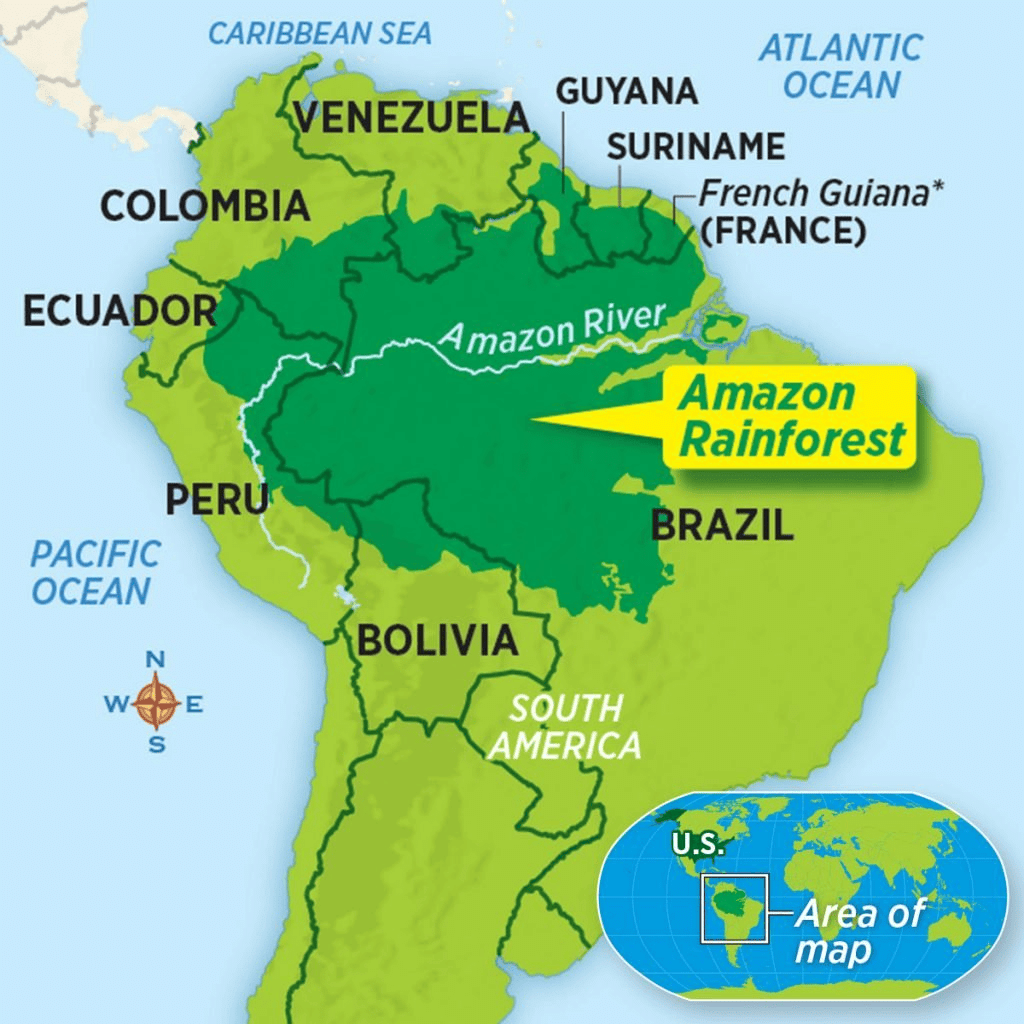 Amazon Basin in South America
Amazon Basin in South America
Life in the Amazon Basin
Life in the Amazon Basin is a fascinating subject that highlights the intricate relationship between the environment and its inhabitants. The Amazon Basin is positioned near the equator, between 10° N and 10° S. This area has a hot and humid climate all year round. Both daytime and nighttime temperatures are nearly the same, creating a sticky feeling on the skin due to the high humidity. It rains almost every day, often without warning. While the temperatures during the day are high, they cool down slightly at night, although humidity remains high.
It is important to note that this tropical region lies very close to the equator, between 10° N and 10° S, which is why it is called the equatorial region.
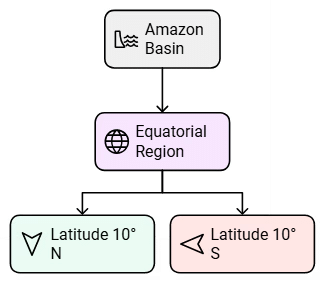 The river Amazon flows from west to east, from the mountains to the Atlantic Ocean.
The river Amazon flows from west to east, from the mountains to the Atlantic Ocean.
- The point where a river meets another body of water is called the river's mouth.
- Multiple tributaries combine to form the Amazon River and its basin.
- The Amazon basin drains parts of Brazil, Peru, Bolivia, Ecuador, Colombia, and a small part of Venezuela.
- The Amazon Basin is the largest river basin in the world.
- The ecological importance of the Amazon rainforest is enormous, as it plays a vital role in regulating the Earth's climate and is home to a wide variety of plants and animals.
The Climate in the Amazon Basin
The Amazon Basin is located directly on the equator. It features a hot and wet climate all year round.
- Both day and night are consistently hot and humid.
- The skin often feels sticky due to the humidity.
- Rain is a common occurrence almost every day, usually without much warning.
- Daytime temperatures are high, accompanied by very high humidity levels.
- During the night, temperatures decrease, but humidity levels remain high.
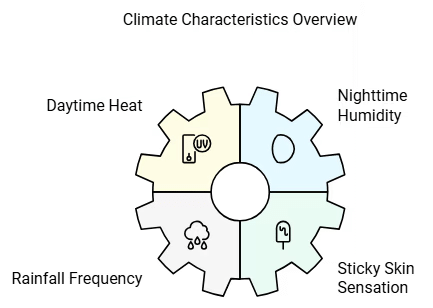
Rainforests
Given the consistent rainfall throughout the year, it's unsurprising that the Amazon Basin boasts a diverse array of trees, collectively referred to as the rainforest. This abundance of rainfall is the primary factor driving the growth of these forests. Additionally, the rainforests provide a natural habitat for numerous tropical birds and animals.
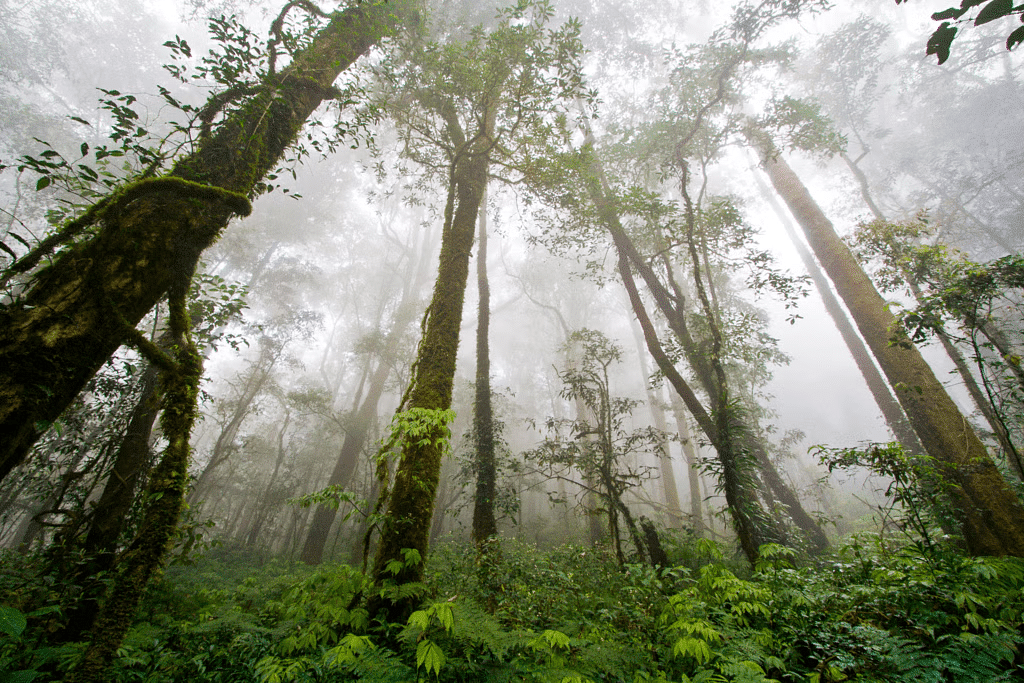 Rainforest
Rainforest
- The ground remains dark and damp.
- Only shade tolerant vegetation may grow here. Orchids and bromeliads grow as plant parasites.
- The rainforest is rich in fauna. Birds such as toucans, hummingbirds, and macaws are common, known for their bright colours and large beaks. These birds also make loud sounds in the forests.
- Animals like monkeys, sloths, and tapirs live in the area.
- Many species of reptiles and snakes thrive here, including crocodiles, anacondas, and boa constrictors.
- Besides, the basin is home to thousands of species of insects. Several species of fishes, including the flesh-eating Piranha, are also found in the river.
- The region exhibits an extraordinary diversity of life forms.
People of the Rainforest
People in the rainforests grow most of their food in small cleared areas. Men hunt and fish while women take care of the crops.
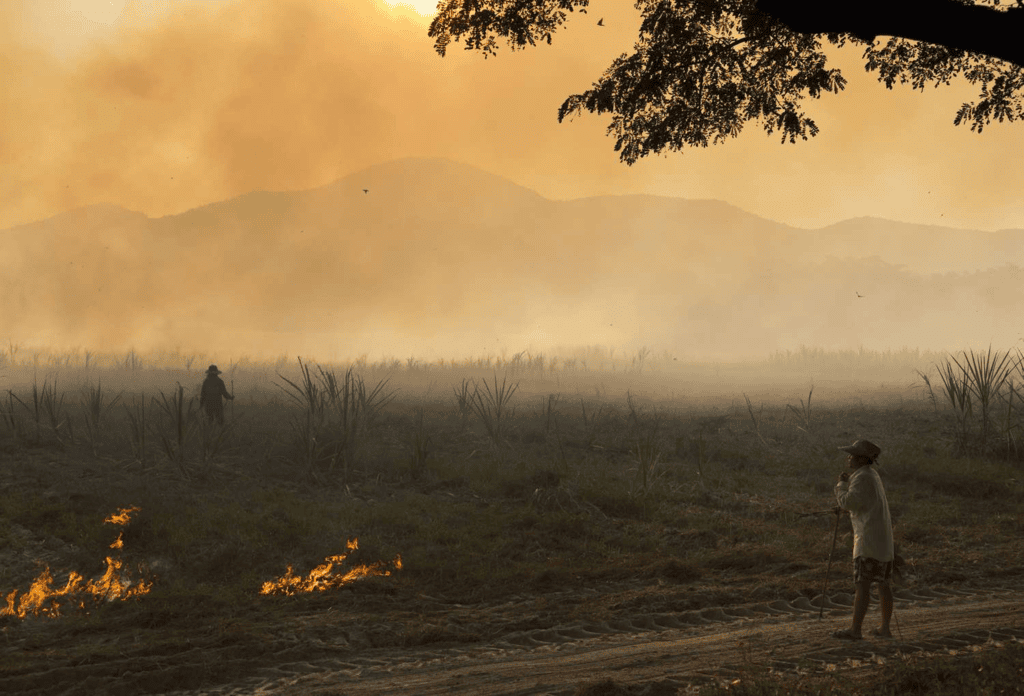 Slash and Burn Agriculture
Slash and Burn Agriculture
- Main crops grown include tapioca, pineapple, and sweet potato. Women sustain families by feeding them the vegetables they grow.
- They practice “slash and burn agriculture.” The main food is manioc, also called cassava, which grows underground like potatoes. They also eat queen ants and their egg sacs.
- Cash crops such as coffee, maize, and cocoa are also cultivated.
- The rainforests provide a lot of wood for houses. Some families live in thatched homes shaped like beehives, while others reside in larger communal houses known as 'Maloca' with steep roofs.
- In the past, the rainforest could only be accessed by rivers. However, in 1970, the Trans Amazon highway opened up access to all parts of the rainforest. Aircraft and helicopters are also used to reach different areas.
- The indigenous population was forced out of their land and relocated to new areas, where they continued their unique farming methods.
- Development activities are causing gradual destruction of the rich rainforests. A significant portion of the rainforest is disappearing each year in the Amazon basin.
- Forest destruction results in topsoil erosion, changing lush forests into barren landscapes.
Life in the Ganga-Brahmaputra Basin
The Ganga-Brahmaputra basin is formed by the tributaries of rivers Ganga and Brahmaputra in the Indian subcontinent.
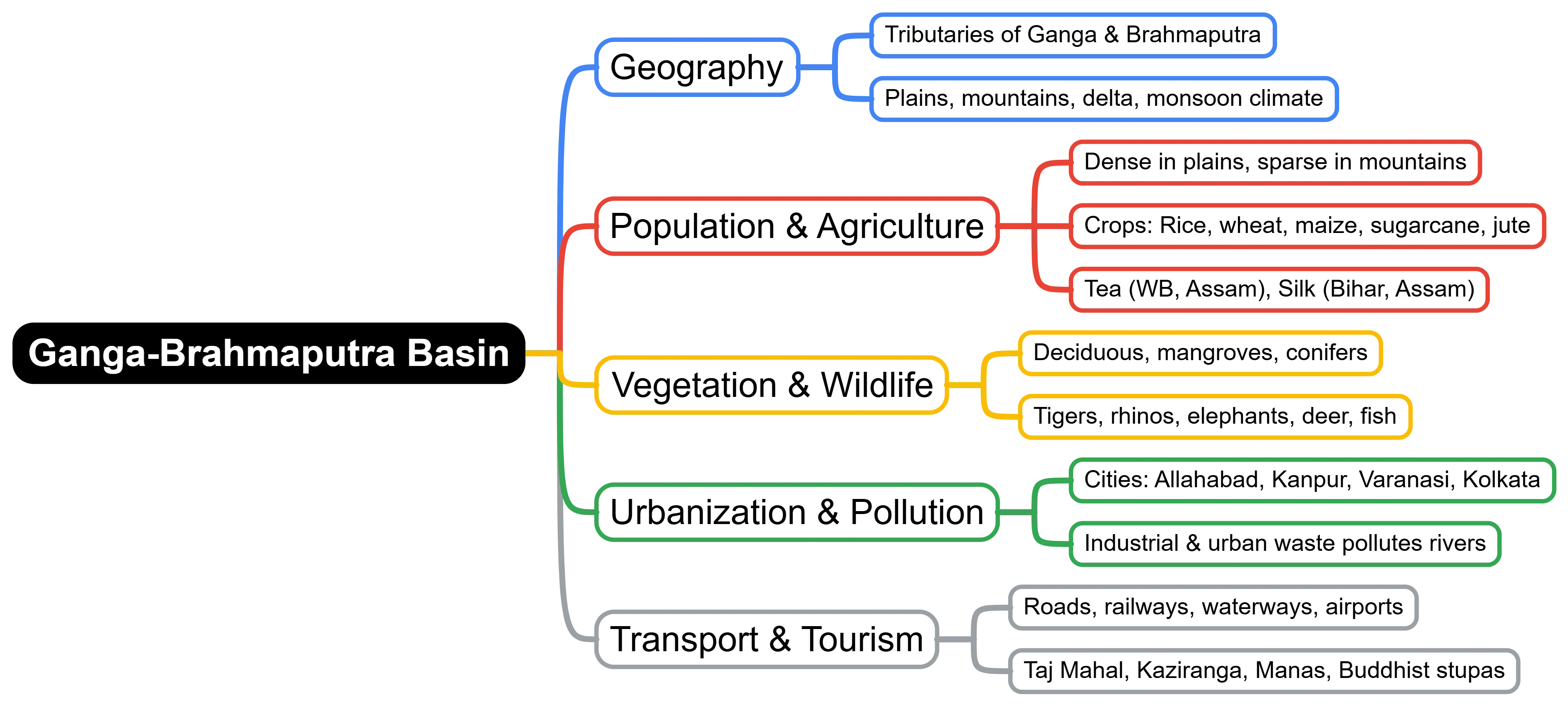
- The basin lies in the sub-tropical region between 10°N to 30°N latitudes.
- Main tributaries of River Ganga include Ghaghra, Son, Chambal, Gandak, and Kosi.
- The basin includes plains, mountains, foothills of the Himalayas, and the Sundarbans delta.
- Ox-bow lakes are scattered across the plain area.
- The region experiences a monsoon climate with rains from mid-June to mid-September.
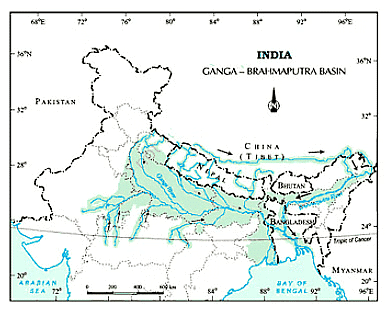
Population Distribution and Agriculture
- The environment plays a major role in how the population is spread out.
- Steep mountainous areas are difficult to live in, resulting in lower population densities, while the plains are more suitable for habitation, leading to high population density.
- The density of population in the plains is very high.
- The plains have fertile land ideal for farming, with rice (paddy) as the main crop. Paddy requires a lot of water, so it is grown where there is ample rainfall.
- Other crops include wheat, maize, sorghum, gram, and millets.
- Cash crops such as sugarcane and jute are also cultivated, along with banana plantations in some regions.
- Tea plantations are common in West Bengal and Assam, while silk is produced in parts of Bihar and Assam.
Vegetation and Wildlife
- The type of vegetation varies according to the landforms.
- Common plants include tropical deciduous trees, bamboo groves, and mangrove forests.
- In cooler, higher regions, coniferous trees such as pine, deodar, and fir can be found.
- The one-horned rhinoceros inhabits the Brahmaputra plain. In the delta area, Bengal tigers and crocodiles are present.
- Wildlife in the basin includes elephants, tigers, deer, monkeys, rhinoceros, and a variety of fish.
Urban Centers and Pollution
- Major cities like Allahabad, Kanpur, Varanasi, Lucknow, Patna, and Kolkata are located along River Ganga.
- Urban wastewater and industrial discharge contribute to river pollution.
Transportation and Tourism
- The basin has well-developed roadways, railways, waterways, and air transport.
- Many airports are situated in the plain area.
- Key tourist attractions include the Taj Mahal on the banks of the Yamuna in Agra, Allahabad at the confluence of the Ganga and Yamuna, Buddhist stupas in Uttar Pradesh and Bihar, Lucknow with its Imambara, Kaziranga and Manas wildlife sanctuaries in Assam, and the unique tribal culture of Arunachal Pradesh.
|
63 videos|371 docs|46 tests
|
FAQs on Class 7 Geography Notes - Human Environment Interactions : The Tropical and Sub Tropical Region
| 1. What is the climate like in the Amazon Basin? |  |
| 2. What are the main features of rainforests in the Amazon Basin? |  |
| 3. How do the people of the rainforest depend on their environment? |  |
| 4. What are the challenges faced by the Amazon Basin? |  |
| 5. How is life in the Ganga-Brahmaputra Basin different from that in the Amazon Basin? |  |
















